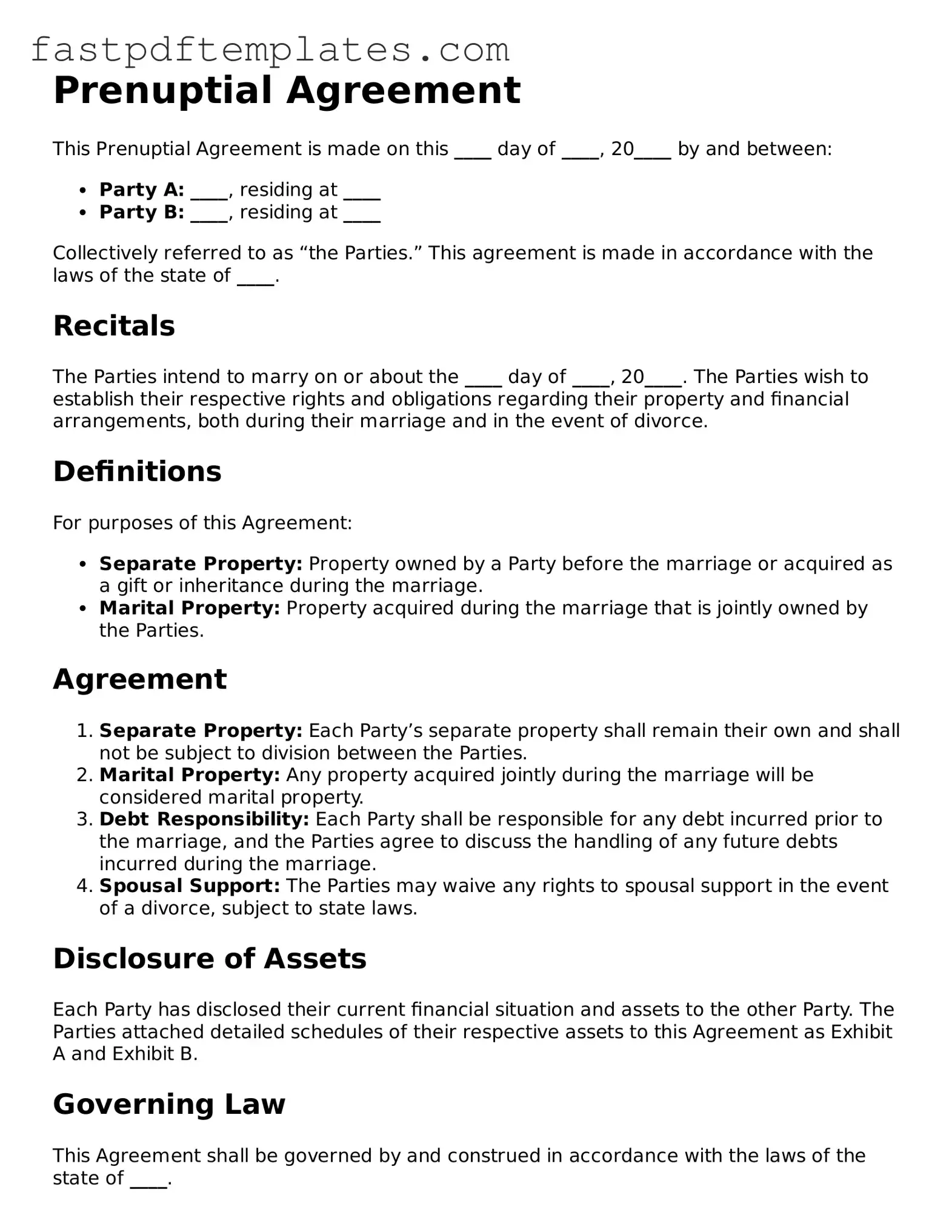Prenuptial Agreement
This Prenuptial Agreement is made on this ____ day of ____, 20____ by and between:
- Party A: ____, residing at ____
- Party B: ____, residing at ____
Collectively referred to as “the Parties.” This agreement is made in accordance with the laws of the state of ____.
Recitals
The Parties intend to marry on or about the ____ day of ____, 20____. The Parties wish to establish their respective rights and obligations regarding their property and financial arrangements, both during their marriage and in the event of divorce.
Definitions
For purposes of this Agreement:
- Separate Property: Property owned by a Party before the marriage or acquired as a gift or inheritance during the marriage.
- Marital Property: Property acquired during the marriage that is jointly owned by the Parties.
Agreement
- Separate Property: Each Party’s separate property shall remain their own and shall not be subject to division between the Parties.
- Marital Property: Any property acquired jointly during the marriage will be considered marital property.
- Debt Responsibility: Each Party shall be responsible for any debt incurred prior to the marriage, and the Parties agree to discuss the handling of any future debts incurred during the marriage.
- Spousal Support: The Parties may waive any rights to spousal support in the event of a divorce, subject to state laws.
Disclosure of Assets
Each Party has disclosed their current financial situation and assets to the other Party. The Parties attached detailed schedules of their respective assets to this Agreement as Exhibit A and Exhibit B.
Governing Law
This Agreement shall be governed by and construed in accordance with the laws of the state of ____.
Entire Agreement
This Agreement constitutes the entire understanding between the Parties and supersedes any prior agreements or understandings, whether written or oral, related to the same subject matter.
Signatures
IN WITNESS WHEREOF, the Parties have executed this Prenuptial Agreement as of the day and year first above written.
_____________________
Party A Signature
Date: ____
_____________________
Party B Signature
Date: ____
_____________________
Witness Signature
Date: ____
